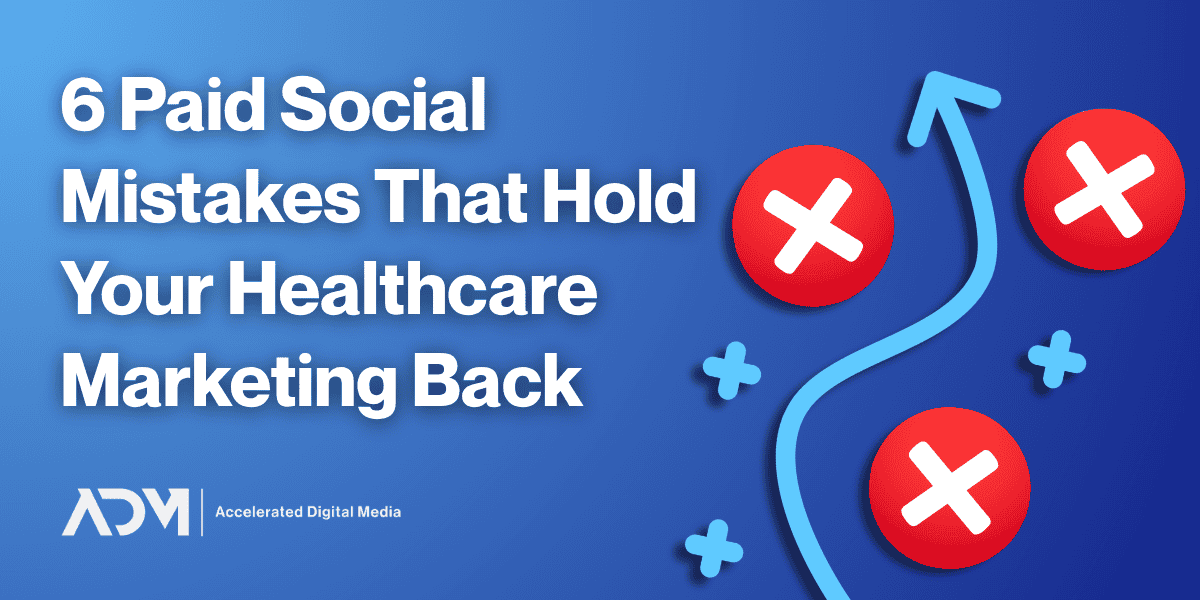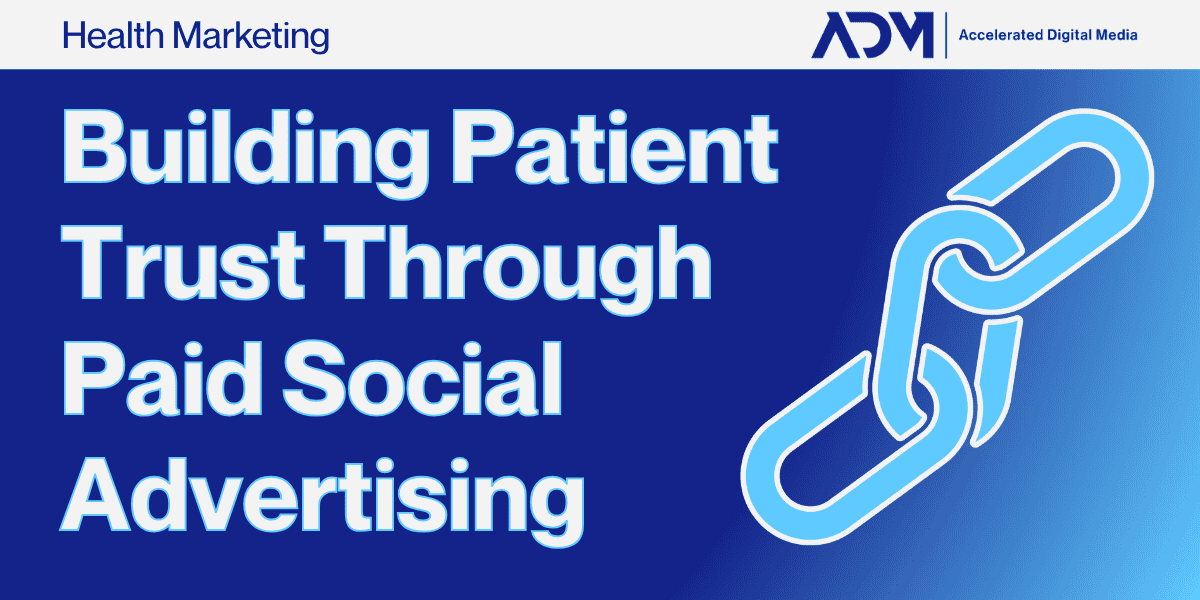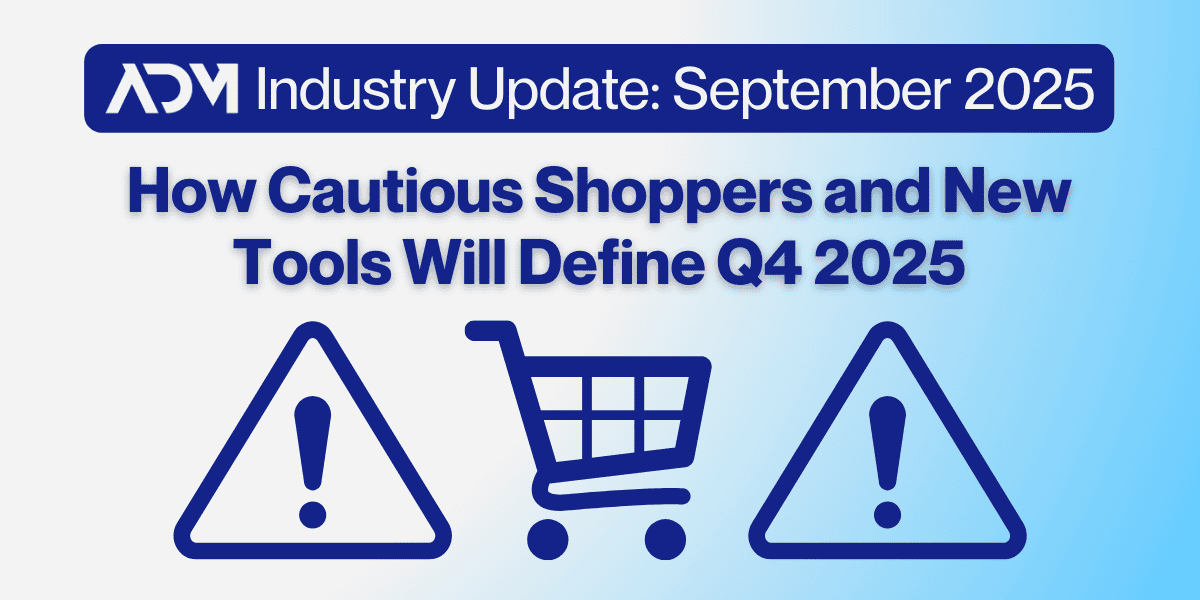Healthcare brands pour time and money into paid social, but often their returns don’t match their effort. Campaigns underperform, patient acquisition slows, and teams are left wondering what went wrong. The problem usually isn’t the platforms or the budget—it’s the strategy behind them.
From missing key patient signals to treating every audience like it’s the same, there are common patterns behind lackluster results. Mistakes can be easy to make in a complex, highly-regulated category like healthcare. But they’re fixable if you spot them. In this blog, we’ll break down six paid social missteps we see too often when consulting with potential clients.
1. Not Serving the Full Patient Journey
The Mistake: While paid social media is typically seen primarily as an awareness tool for health brands, many brands treat that as its only function. Sure, as we’ve discussed, it’s great for introducing information and creating connections. But it can also help reach patients who are further along in their learning phase and actively seeking treatments or other solutions.
How to Avoid It: Understanding and aligning with the patient journey is crucial for health marketers. It’s vital to have a detailed roadmap of how your particular patient base typically navigates to treatment. Different ads, formats, and messages appeal to potential patients at various stages of their health journey.
Paid social lead gen campaigns are often overlooked by healthcare brands, yet they are essential for products and services that involve a longer journey. These campaigns encourage users to reach out for more information or introductory services like a free initial health consultation, which can be the start of a long and fruitful patient relationship.
2. Relying Too Heavily on the Algorithms
The Mistake: Automation is everywhere in digital marketing today, and in many cases AI-powered campaign types like Meta’s Advantage+ definitively offer improved performance. They often take away some direct control over targeting and delivery, which is part of the, well, advantage. The mistake is being too hands-off with them: this is not “set-it-and-forget-it” technology.
How to Avoid It: These powerful campaign types still need to be monitored, particularly when deployed for something as nuanced as health marketing. Without strong guardrails and occasional correction, the algorithms can begin to optimize for the wrong signals or audiences—which ADM detects and fixes periodically.
Ultimately, these campaigns will want to deliver the easiest-possible wins based on in-platform metrics, so you’ll need to ensure that the targets being optimized for are reflective of your business goals even if your primary source of truth is outside of the platform. Health marketers need to closely monitor campaign performance and seek deeper insights across sources to ensure that their campaigns are driving the intended results.
3. Not Centering Patient Voices
The Mistake: Many brands in healthcare make the mistake of holding fast to the clean and formal visual styles that are commonplace in their other advertising mediums. Slick, TV-style videos are great. Colorful, informative infographics can be enlightening and appealing. But it’s a mistake for brands to avoid more organic-looking content. By doing so, healthcare brands fail to take advantage of what social media does best: provide relatable faces and voices.
How to Avoid It: User-generated content (UGC) is increasingly important in social media health marketing. Many brands in healthcare make the mistake of deciding that the aesthetics of UGC are beneath their brand style—opting to hold fast to the clean and formal approach that’s commonplace on other formats.
But UGC helps further your efforts to make empathetic connections by showcasing relatable individuals and patient stories. Because health brands are limited in the targeting they can engage in, showing content that feels real and human becomes a critical way to connect with people emotionally. Testimonial-style videos, day-in-the-life snippets, and even lightly polished “talking head” Reels can provide a sense of authenticity that’s hard to achieve through highly produced creative. Health is personal, so your marketing should be personable.
4. Failing to Embrace Creative Testing
The Mistake: Creative testing is an indispensable part of health advertising on social media. But many brands assume they don’t have the budget to spare on continually running creative tests. This is a mistake: If done the right way, creative testing will often pay for itself in long-term performance improvements.
How to Avoid It: Despite the challenges, there is no excuse for not experimenting with different ad creatives to find the most effective results. Regular creative testing allows health marketers to optimize their campaigns and achieve better performance.
This doesn’t have to be a costly process from the iteration side: Even copy testing can make a huge difference. Creative variations can be as basic as a simple “post-it” or “sticky note” style ad test, a very low-lift creative style that can yield significant benefits without being costly or complex.
Even modest testing programs can reveal valuable insights about emotional tone, imagery, or copy structure. Especially in a category where nuance matters, learning what works—and why—should be a continuous process, not a one-off effort.
5. Linking Paid Social Ads to Poor or Generic Landing Pages
The Mistake: Many brands put a lot of effort into their ads yet dump all of the traffic back to inadequate or overly-general landing pages (or their homepages). Social media ads should create clear expectations—and nothing turns users off of brands faster than their expectations not being met.
How to Avoid It: Your landing pages should clearly relate to the ads that brought users there, advancing the themes and messages that caused them to click your paid social ads in the first place. Medical conditions and treatments can often be referred to by countless clinical and non-clinical terms, so you should maintain consistency between ad and destination: (for example, if they’re “pimples” in the ad, they should not solely be “acne” on the landing page). Pages should provide clear, accurate information about your health offering to further educate users so they can determine whether they want to take further action.
6. Failing to Heed Platform Policy Restrictions
The Mistake: For once, we’ve saved the compliance talk for last. Ignoring federal data safety laws is a problem we’re not even going to call a “mistake”—but those aren’t the only set of rules that health marketers need to follow. Platforms like Facebook, Instagram, TikTok, and Pinterest impose stringent guidelines, particularly for health-related content—and many health brands still flaunt them. The results can be ad disapprovals and even account suspensions.
How to Avoid Them: The best ways to avoid trouble are to know the policies well and to stay informed when they change. The messaging rules across different paid social media platforms are very diverse. For instance: Most platforms have some rules about how you can advertise cosmetic procedures; TikTok just bans all of it. Brands can’t advertise weight loss products at all on Pinterest. And Facebook and Instagram have some pretty specific, often-overlooked stipulations about the language that healthcare advertisers can use.
You need to weigh the content of your graphics and ad copy against all these rules before pushing an ad live—and you should probably think twice before just copying and pasting ads across platforms. These rules do get updated periodically, so it’s vital to keep up.
We’ve got you covered: ADM keeps an updated list of important healthcare advertising restrictions on paid social media (and SEM health restrictions, too). And if you have any additional questions about policy or strategy for healthcare marketing on social media—don’t hesitate to reach out to our team below:




